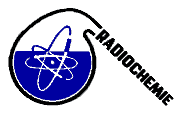Speaker
Ms
Claudia Landstetter
(Austrian Agency for Health and Food Safety; CC Radiation Protection and Radiochemistry)
Description
Environmental samples in Upper Austria have been measured for 90Sr in the year 2005. These measurements were conducted on behalf of the Federal Ministry of Agriculture, Forestry, Environment and Water Management and were part of a project called “Temelin Project”. The aim of this project which started in 1992 is to detect any radiological impact of the nuclear power plant Temelin in the Czech Republic on the environment of Austria. After the nuclear weapon tests the average deposition of 90Sr in Austria amounted to 3.3 kBq/m². In 1986 the average deposition was 0.9 kBq/m². To assess the actual condition in soil, grass and cereals 90Sr was measured in these samples in 2005 and 2006. For all samples oxalate precipitation was conducted and strontium specific columns (Eichrom Industries, Inc.) were used. The calcium concentration in these samples was determined to estimate the amount of resin needed for the preparation. The prepacked 2 ml columns with particle size 100 – 150 µ were used for soil (lower limit of detection (LLD) below 2 Bq/kg). For grass and cereal samples columns were packed with the 100 – 150 µ resin to gain a LLD below 2 Bq/kg and below 0.1 Bq/kg respectively. After digestion of soil samples hydroxide precipitation was used as an additional separation step. The 90Sr was measured by liquid scintillation counting and via 90Y by Cherenkov radiation counting. For quality assurance reasons, first the initial strontium concentration in the sample was determined then a strontium carrier solution was added and after the separation steps the chemical recovery was determined by ICP-MS. Thus, no radioactive spike and just a small amount of the measuring solution were needed. The results are presented and discussed.
Primary author
Ms
Claudia Landstetter
(Austrian Agency for Health and Food Safety; CC Radiation Protection and Radiochemistry)
Co-authors
Dr
Arno Achatz
(Austrian Agency for Health and Food Safety; CC Radioecology and Radon)
Dr
Christian Katzlberger
(Austrian Agency for Health and Food Safety; CC Radiation Protection and Radiochemistry)
Dr
Wolfgang Ringer
(Austrian Agency for Health and Food Safety; CC Radioecology and Radon)

